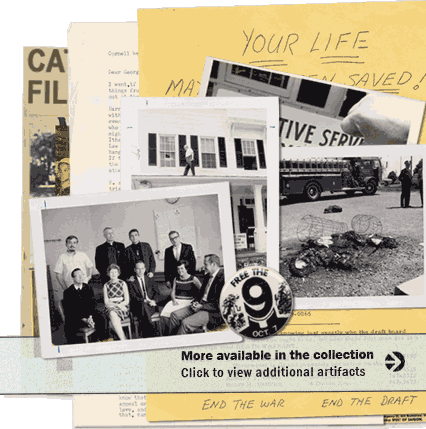 |
|
    |
 |
The Catonsville Nine File On May 17, 1968, nine men and women entered the Selective Service Offices in Catonsville, Maryland, removed several hundred draft records, and burned them with homemade napalm in protest against the war in Vietnam. The nine were arrested and, in a highly publicized trial, sentenced to jail. This act of civil disobedience intensified protest against the draft, prompted debate in households in Maryland and across the nation, and stirred angry reaction on the part of many Americans. It also propelled the nine Catholic participants - especially priest brothers Daniel and Philip Berrigan - into the national spotlight. The Catonsville action reflected not only the nature of the Vietnam antiwar movement in 1968, but also the larger context of social forces that were reshaping American culture in the 1960s. This site is a resource for those interested in this nationally publicized event in Maryland. The project was selected by the MDCH Advisory Committee. |
||